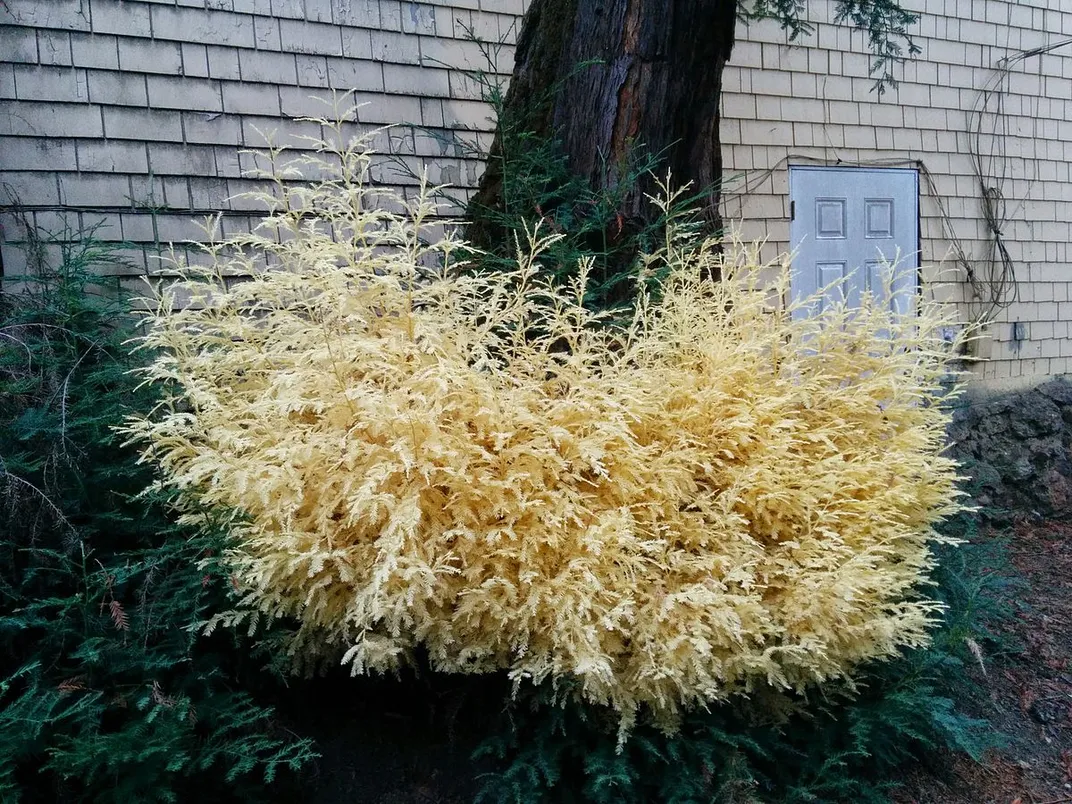Stalking Down Answers: Why Are Some Redwoods White?
The mysterious pale trees many not just be odd genetic mutations, a new study finds
/https://tf-cmsv2-smithsonianmag-media.s3.amazonaws.com/filer/64/9e/649e2ebe-da71-4fa8-9692-2c70cf86debc/5511200078_ec973d2f0f_b.jpg)
Ghost-like trees lurk in the dark understory of California’s redwood forests, appearing as white apparitions among their towering brown and green neighbors. The pale trees, known as albino redwoods, have long been a mystery to researchers, but new research presented at the 2016 Coast Redwood Science Symposium may finally shed light on their purpose, Paul Rogers reports for The Mercury News.
Scientists have documented Albino redwoods in Northern California as far back as 1866, but only about 400 of the trees currently exist in the state. The trees survive despite lacking chlorophyll, which prevents them from photosynthesizing. Since they can’t produce their own energy, they make a living through what seems like a parasitic relationship, sprouting up from the branches or roots of the larger parent trees, Rogers tells Renee Montagne for NPR’s Morning Edition. But whether these ghost-like trees are harmful to their hosts has remained unknown, until now.
A new analysis by Zane Moore, a doctoral student at the University of California Davis, suggests that the albino trees are not parasites, but could actually help the parent trees survive. Moore’s analysis shows that the albino trees’ needles contain high levels of toxic heavy metals, including nickel, copper and cadmium. These heavy metals were at least twice as high in the albino redwoods compared to healthy redwood trees, Rogers tells NPR, suggesting that the trees could be serving as a soil filter.
“They are like a liver or kidney that is filtering toxins,” Moore tells The Mercury News. “They are basically poisoning themselves.” If cloned, the albinos could potentially act as a kind of sponge in areas with toxic metals in the soil, Rodgers says.

The preliminary results mesh well with Moore’s earlier observations that albino redwoods may help the forest giants adapt to stressful situations. In 2014, Moore told Peter Jaret at National Geographic that he had recently witnessed an unusual number of young albinos—an occurrence possibly linked to California’s drought.
“One idea is that albinism is an adaptation to cope with stress,” he told Jaret. “Every one we study looks to be stressed.”
Even so, many questions about the albino trees still remain, Rodgers reports. Scientists still don’t know why some albinos are pure white while others take on a yellow tinge or how the exceptionally rare iteration, known as chimeras, have both green and white leaves.
How these albino shoots first developed also remains unknown, Jaret reports. The albinism could be an evolutionary mistake, Jarmila Pittermann, an assistant professor of ecology and evolutionary biology, told Jaret. Redwoods’ famed longevity leaves plenty of time for genetic mutations.
The rare nature of these albino redwoods and their haunting appearance has given them a sort of arboreal mysticism among some Californians. Emily Burns, the director of science at Save the Redwoods League in San Francisco, tells Rogers, “There’s nothing like walking through the forest and seeing bright white leaves. People have wondered about them for a long time.”
Now, thanks to Moore’s work, scientists may be one step closer to finally solving the riddle of the ghostly albino redwoods.